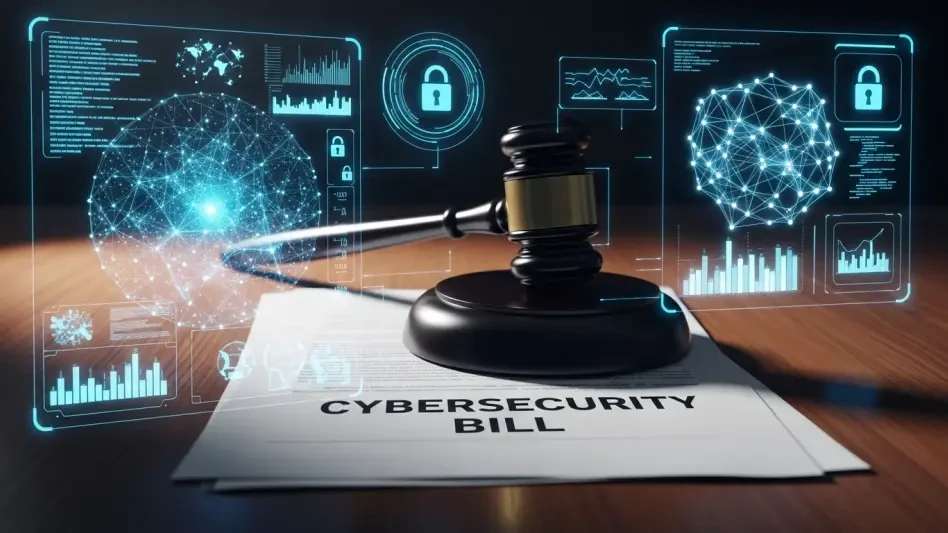Cybersecurity remains a critical issue for the U.S. government, with the defense of both corporate and government networks against the evolving landscape of cyber threats being more essential than ever. The Biden Administration’s strategy largely focused on regulatory mandates, enforced compliance, and mandatory incident reporting as a way to strengthen the nation’s digital defenses. However, these measures resulted in a complex and often cumbersome regulatory environment, which has led many to question their effectiveness. The Trump Administration now has the opportunity to reshape the national cybersecurity policy, potentially leading to a more secure and efficient digital infrastructure.
The Current Cybersecurity Landscape
Challenges with Regulatory Mandates
Under the Biden Administration, the approach to cybersecurity was heavily rooted in regulatory mandates. Organizations were required to follow a series of strict compliance measures and mandatory incident reporting protocols. While this regulatory framework was designed to safeguard networks and digital information, it often led to a complicated web of requirements that proved difficult for many organizations to navigate. The complexity of these mandates sometimes overshadowed their initial purpose, resulting in time-consuming processes that diverted valuable resources away from actual cybersecurity efforts.
Moreover, these regulations were frequently implemented without fully considering their cumulative effect on companies. Each new mandate added a layer of bureaucracy and financial burden, regardless of whether these rules significantly improved security measures. Organizations, especially smaller entities, found themselves struggling to meet the requirements while keeping up with everyday operations. Consequently, this regulatory overload often led to compliance fatigue and diminished the actual focus on proactive cybersecurity defenses, as companies diverted their energies to meeting regulatory standards rather than enhancing their security posture.
Impact of Burdensome Regulations
Navigating the existing maze of cybersecurity regulations has become an increasingly daunting task for companies. The implementation of these rules has frequently resulted in duplicative and sometimes contradictory mandates, which are both costly and time-consuming to adhere to, without substantially enhancing overall security. Given the rapid evolution of technology and cyber threats, the regulatory approach has struggled to keep pace, often leaving organizations caught between outdated regulations and cutting-edge threats. This mismatch not only drains financial resources but also diverts critical attention away from implementing effective cybersecurity measures.
For example, the invalidated EPA cybersecurity regulations and the overextension of the Cyber Incident Reporting for Critical Infrastructure Act (CIRCIA) by the Cybersecurity and Infrastructure Security Agency (CISA) illustrate the inefficacies of the current system. The excessive reach of some regulations affected over 316,000 organizations, predominantly small entities ill-equipped to handle such extensive compliance requirements. These burdensome regulations contributed to a misallocation of resources, with companies spending more on adhering to rules than on meaningful security improvements. The regulatory complexity and redundancy have thus increasingly become obstacles rather than aids in safeguarding digital assets.
The Trump Administration’s Opportunity
Executive Order on Regulatory Review
In an effort to initiate a much-needed overhaul of the cybersecurity regulatory landscape, the Trump Administration issued an executive order calling for a comprehensive review of all pending and recently finalized regulations. This executive order directs federal agencies to pause the issuance of new rules, withdraw those pending publication, and consider delaying the effective date of recently published regulations. The aim is to critically evaluate existing policies and identify opportunities to streamline cybersecurity regulations, cutting down on unnecessary complexity and redundancy.
This executive order represents a significant step toward reshaping and refining the nation’s approach to cybersecurity. By thoroughly reviewing the current regulatory framework, the administration can identify which mandates genuinely contribute to enhanced security and which do not. The initiative could serve as a launching point for developing a more cohesive and effective cybersecurity strategy, one that balances regulatory oversight with the need for flexibility in addressing evolving threats. This review process could ultimately establish a clearer, more efficient framework that facilitates better protection of digital infrastructure without overburdening companies.
The Need for Streamlined Regulations
One of the primary arguments for a streamlined approach to cybersecurity regulations is the prevention of resource misallocation caused by burdensome compliance requirements. Excessive regulatory processes often consume significant financial and human resources, making it difficult for organizations to allocate sufficient attention to actual security measures. Freeing organizations from the weight of excessive compliance allows them to focus on proactive and defensive cybersecurity strategies, thereby enhancing their overall security posture.
Streamlining the regulatory environment can also foster innovation and adaptability. Companies need to remain agile to respond effectively to rapidly evolving cyber threats. A leaner, more focused set of regulations can provide organizations with the flexibility they need to implement cutting-edge security measures and adapt to new challenges as they arise. This approach can help prevent the regulatory landscape from becoming a roadblock to progress and encourage organizations to invest in robust cybersecurity frameworks tailored to their specific needs and threats, rather than merely complying with a one-size-fits-all mandate.
Legal and Economic Considerations
Loper Bright Case’s Impact
A significant legal development that could influence the cybersecurity regulatory landscape is the landmark decision in the Loper Bright case. This decision curtailed the government’s ability to impose regulations without clear congressional authorization, fundamentally shifting the balance of power between regulatory agencies and the entities they oversee. By effectively ending the Chevron deference doctrine, which allowed courts to defer to regulatory agencies’ interpretation of ambiguous laws, the decision has opened the door to challenging existing regulations across all sectors, including cybersecurity.
This legal shift presents a unique opportunity to re-evaluate and potentially revise existing cybersecurity regulations that may lack clear congressional backing. By creating a legal foundation that requires explicit legislative authorization for new rules, the decision can help ensure that future regulations are more thoughtfully considered and better aligned with both congressional intent and the practical realities faced by organizations. This shift could drive a more transparent, accountable, and ultimately effective regulatory process, enhancing national cybersecurity while reducing unnecessary burdens on businesses.
Cybersecurity as an Economic Challenge
The article underscores the importance of viewing cybersecurity not just as a technical issue but as a significant economic challenge. Defending against cyber attacks is often more costly than launching them, especially against sophisticated adversaries and organized cybercriminal groups. The asymmetry of this situation, where attackers can deploy advanced tactics with relatively minimal investment, places a considerable burden on defenders who must invest heavily in comprehensive security measures. This economic imbalance necessitates judicious resource allocation to ensure that investments in cybersecurity yield maximal protection.
Given limited resources, time, personnel, and funding, companies cannot afford to misallocate their efforts towards redundant regulatory compliance. Instead, they need to focus their resources on effective defensive measures that can deter or mitigate cyber threats. Efficiently managing these resources is crucial in maintaining a robust cybersecurity posture. By recognizing cybersecurity as an economic challenge, policymakers and industry leaders can work towards creating an environment where resources are allocated more strategically, ensuring that defensive measures are both cost-effective and capable of countering advanced cyber threats.
A Collaborative and Risk-Informed Approach
Addressing the Government-Industry Relationship
One of the critical issues with the current regulatory approach is the adversarial relationship it fosters between the government and industry. The strict mandates and compliance-driven culture often create a climate of fear and mistrust, which can hinder collaborative efforts toward effective cybersecurity measures. Instead of working together to identify and address vulnerabilities, organizations might focus on merely meeting regulatory requirements to avoid penalties, thus missing the bigger picture of holistic security improvement.
To move forward, it is essential to foster a more collaborative and trust-based relationship between the government and industry. By shifting away from an adversarial stance, both parties can engage in open dialogues and joint efforts to tackle cybersecurity challenges. Shared threat intelligence, collaborative development of best practices, and mutual support in incident response are some of the ways this relationship can be strengthened. This cooperative approach can lead to more effective and nuanced cybersecurity measures that leverage the strengths and expertise of both the public and private sectors, creating a united front against cyber threats.
Empowering Companies with Threat Intelligence
A major shift proposed in the article is the move from a “check the box” regulatory approach to a risk-informed strategy. This would involve providing companies with vital threat intelligence, empowering them to make informed decisions on how to allocate their limited resources most effectively. By understanding the specific threats they face, companies can prioritize their cybersecurity efforts where they are most needed, rather than spreading their resources thin across a broad spectrum of regulatory requirements.
This risk-informed approach aligns with the dynamic nature of cyber threats, where attackers continually evolve their tactics. Equipped with real-time threat intelligence and an understanding of the latest attack trends, companies can tailor their defenses to address the most pertinent risks. This enables organizations to be proactive rather than reactive, enhancing their ability to prevent and mitigate cyber attacks. A focus on threat intelligence and risk management ensures that cybersecurity investments are strategically targeted, providing greater protection and resilience against a constantly shifting threat landscape.
The Path Forward
Streamlining Cybersecurity Practices
The article concludes by highlighting the deficiencies in the current cybersecurity regulatory environment, characterized by its complexity, redundancy, and resource misallocation. It calls for a more streamlined, risk-informed approach that emphasizes collaboration and adaptability to technological changes. By reducing the regulatory burden, companies can focus their efforts on genuine security improvements, cultivating an environment where proactive defense measures are prioritized over strict compliance.
Reshaping the regulatory landscape to foster innovation and flexibility is crucial in ensuring robust defenses against future threats. Such an approach allows organizations to stay ahead of adversaries by adopting the latest security technologies and practices. It also encourages continuous improvement and adaptation, as companies are better positioned to respond to emerging threats and vulnerabilities. Streamlining regulations can thus facilitate the development of a more resilient and secure digital infrastructure, capable of withstanding the evolving cyber threat landscape.
The Administration’s Role in Policy Development
Cybersecurity remains a critical concern for the U.S. government, especially as cyber threats continue to evolve. Protecting both corporate and government networks has never been more essential. The Biden Administration’s cybersecurity strategy primarily focused on regulatory mandates, enforced compliance, and mandatory incident reporting to bolster the nation’s digital defenses. However, these initiatives have led to a complex and often burdensome regulatory environment, causing many to doubt their effectiveness. Now, with the opportunity to reshape national cybersecurity policy, the Trump Administration could potentially lead the way to a more secure and efficient digital infrastructure. By reconsidering the existing policies and maybe reducing the regulatory burdens, there might be a chance to enhance the overall security posture while streamlining processes. This shift could address ongoing vulnerabilities and improve readiness against future cyber attacks, fostering a more resilient cyber environment for both public and private sectors.







